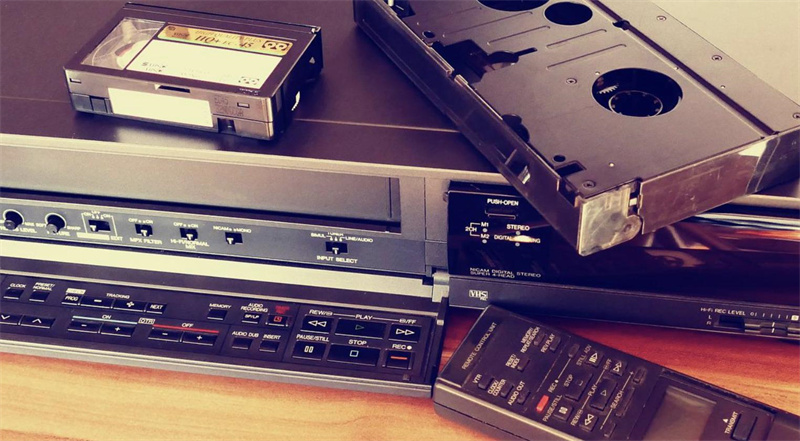
Today we're going to take a journey through the ages as we explore the evolution of TV and Film over the years. We will look at each of the most popular entertainment options to see how things have changed over the years.
Cinema reels and projectors were the first way that people watched movies. This was an exciting new technology at the time, and it allowed people to watch movies in theatres. Remarkably, China was introduced to cinema in 1896 with the Chinese film Dingjun Mountain (1905).
Cinema projection reels and equipment became mainstream across the developed world in the early 1900s. The first public showing of a film was in Paris in 1895, and films were being shown worldwide within a few years. However, it was not until the early 1900s that projection equipment and reels became widely available. This was due to several factors, including development of new film formats (such as 35mm film) and the rise of movie theatres.
Cinema projection was also available for home use from the early 1900s. However, it was not until the 1950s that home cinema projection equipment became widely available. This was due to several factors, including the development of new film formats (such as 8mm and 16mm film) and the rise of television.
Cinema projection equipment was expensive, especially in the early years. However, the cost of projection equipment and reels has decreased over time as the technology has become more widely available.
Of course, we’ve come an incredibly long way since the days of old-school movie projectors. Today, the crème de la crème of TV, film, and blockbusters are showcased in grand style digitally.
Movie buffs can enjoy top-tier flicks on streaming platforms, with all the bases covered. This includes Korean, Taiwanese, Malaysian, and Japanese thrillers. Outstanding productions are readily available via the leading Chinese dramas app, Viki. Buckle up! We’re about to delve into the Evolution of TV & Film Over the Years!
Betamax Video Cassettes

Sony introduced the Betamax format in 1975. The first Betamax VCR was the SL-6000, released in May of that year. The SL-6000 cost $1,400 when it was released in 1975.
In today's dollars, that would be about $6,500. It is estimated that about 100,000 Betamax VCRs were sold in the United States between 1975 and 1979. There is no accurate estimate of how many Betamax cassettes were sold, but it is estimated that Sony alone sold over 40 million by the time the format was discontinued in 2002.
The Betamax format was unique in that it used a smaller cassette than the competing VHS format. This made the Betamax cassettes less expensive to produce, but also meant that they could only hold up to an hour of video.
Betamax VCRs had the ability to record video at a higher quality than VHS machines, which made up for the shorter recording time. What eventually happened to Betamax? The Betamax format was ultimately eclipsed by the VHS format, which could hold more video and was less expensive to produce.
The Rise of VHS Cassettes
The VHS cassette was developed by JVC in 1976 as a competitor to Sony's Betamax format. The first VHS VCR, the VR-3300, was released in 1977. How much did these cost for consumers at the time? The VR-3300 cost $1,295 when it was released in 1977.
In today's dollars, that would be about $6,000. It is estimated that about 2 million VHS VCRs were sold in the United States between 1977 and 1979.
There is no accurate estimate of how many VHS cassettes were sold, but it is estimated that over 2 billion were sold worldwide by the time the format was discontinued in 2008. Consumers could rent VHS tapes from a video store and watch at home.
This was a very popular option for many years, but it eventually started to decline in popularity as other options became available. VHS cassettes were eventually replaced by DVD and Blu-ray formats.
DVD and Blu-ray for TV and Film
The main reason that DVD and Blu-ray came about was for storage purposes. Film and tv take up a lot of space, so having a physical copy on hand was much more convenient than storing everything digitally. This also allowed for people to watch their favorite movies and shows offline.
DVD and Blu-ray formats were popular because they were easy to use and allowed for high-quality playback. Additionally, these formats generated a lot of commercial activity because people were buying movies and tv shows to watch at home.
DVD and Blu-ray eventually failed because of the rise of streaming services like Netflix. This was much more convenient for most people, which led to the decline of DVD and Blu-ray sales.
Similarly, video stores and Blockbusters eventually failed because of the rise of streaming services. With these services, people could watch their favorite movies and shows online without having to buy or rent physical copies. This was much more convenient for most people, which led to the decline of video store sales.
The Rise of Streaming Services Online

Online streaming of movies and TV shows is so popular nowadays because it is much more convenient than anything we have ever encountered before. Online streaming allows film fans to enjoy the latest Chinese dramas, Korean sci-fi flicks, and Malaysian movies without having to leave home. Additionally, online streaming is usually cheaper than buying or renting physical copies of movies and TV shows.
The best movie streaming services usually offer various features, including Hollywood blockbusters, Bollywood musicals, film noir, and action-packed Asian attractions.
Plus, it’s quick and easy to download and install mobile apps for Android or iOS to enjoy movies on the go. For all of these reasons, movie streaming services are much more convenient and cost-effective than other options. Some of the best features include high-definition playback, multiple device support, and offline viewing.










